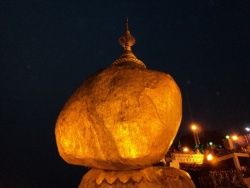The Waste Land
T. S. Eliot (1888-1965) was one of the most influential poets of the 20th century and his poem, The Waste Land, is considered his most important work. Filled with obscure historical, literary and mythical allusions and intricate patterns of symbolism, it portrays the modern world as empty and bereft of spiritual meaning. The third canto of The Waste Land is called The Fire Sermon after the Buddha’s famous third discourse of the same name, the Ādittapariyāya Sutta (S.IV,19-20). At the end of this canto, Eliot paraphrases the Buddha’s words repeated many times throughout the discourse, ‘Oh monks, all is burning’ (Sabbaṃ bhikkhū ādittaṃ) as ‘burning, burning, burning, burning!’ By this the Buddha meant that the ordinary person is obsessed with sense pleasure and imagery and is burning with desire, hatred and delusion. For Eliot, these words were a powerful and unflinching comment on the vacuous way many people live.
Elliot had a deep appreciation for the Buddha’s teachings and had even studied some Buddhist scriptures. According to Peter Ackroyd’s biography of Eliot, his ‘... attraction to Buddhism was not simply a philosophical one. Nirvāna is extinction – the annihilation of desire, the freedom from attachment – and there was, as can be seen from his poetry, an overriding desire in the young Eliot to be free.’ If Eliot was stirred by the Buddha’s depiction of ordinary mundane existence, he must have been equally moved by the promise at the end of the Ādittapariyāya Sutta that it is possible to rise above this way of being. ‘Seeing this, the well-instructed noble disciple turns away from the senses. Turning away from them his passions fade, with the fading of the passions he is free and when he is free he knows he is free.’ It is interesting to note that Eliot may have even taken a cue from the Buddha when he named his famous poem. The Buddha often described certain negative psychological states as being ‘a mental waste land’ (cetokhila, A.V,17; M.I,101; S.V,57).
